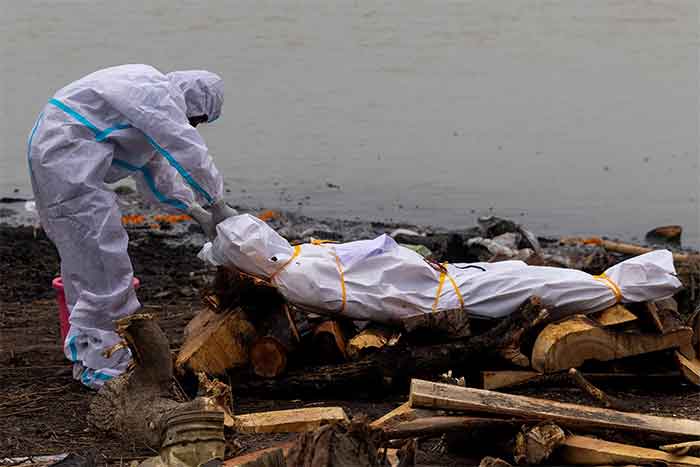
With the outbreak of corona-virus from China to the world since December 2019, it has once again challenged the State security and highlights the exigency of ‘human security’ which is visible to all. The United Nations General Assembly resolution 66/290 addresses ‘human security’ as an approach in identifying and addressing cross-cutting challenges to the survival, livelihood and dignity of an individual. The crisis towards human life and security have become complex, overlapping in creating multiple insecurities which have proliferated exponentially spilling it to the entire communities across the national border.
Since the seventh corona-virus or SARS-CoV2 other than SARS-CoV, MERS-CoV, HKU1, NL63, OC43 and 229E, but novel in temperament was first reported to the World Health Organization on 31 December 2019. On 11 February 2020, WHO after taking time named it as COVID-19 (Corona-Virus-December-2019) alarming its threats all over the world. Till the month 17 March 2020, COVID-19 cases had risen to 182,000 leading more than 7000 to death which led to the lockdown of people’s movement worldwide. COVID19 has also shown its importance above all the issues by occupying the space of entire News channels. However, signifying human security as the highest priority of all, but on the process, the state machinery has some way campaign the insecurity towards marginalized. There is no guarantee of human life even in the techno-scientific world, where science and technology have been efficient in assisting in the life of humankind.
Today biggest fear is thoughts of mankind towards another, in an anarchic society that has led State itself to turn into primitive wits. World Migration Report (2020) shows India has the highest number of international migrants in the international level. Out of the total population of 272 million international migrants, almost 17 million (6 per cent) of them are from India which includes students, workers and their family. The Economic Survey 2016-2017 estimates that at least 9 million migrate at an intra-state level such as to Delhi, Mumbai and Bangalore in search of work. The migrants mostly belong to Bihar, Uttar Pradesh, West Bengal and Assam. India government calls for ‘Janata curfew’ where people are asked to voluntarily quarantine for almost month till 14 April 2020. Also, Indian Council of Medical Research (ICMR) claims that one infected person could infect up to 406 others in 30 days if there is no lockdown and urges the centre to extend even after 21 days lockdown. However, the government declaration of sudden lockdown itself created a humanitarian crisis in many states and workers had to take long way by walking hundreds of kilometres in search of food and shelter. There was a fear that before corona-virus fatality, hunger could catch them to death. These led to many homeless citizens to live in fear of wants (especially food) more than fear of infecting by the pathogen.
It says future lies in the hands of youths and every educational system must function even after the shutdown of educational institutions. UNESCO noted that school closure in Asia will lead millions of students falling behind education as classes’ shifts online and many will be left out simply by the lack of internet facilities. India’s total internet users are 560.01 million that accounts for 42% of the total population. Among the states, Maharashtra (46.11 million), Andhra Pradesh (43.78 million) and Tamil Nadu (40.71 million) are the top three states with the maximum number of internet users. However, there are 2805 villages in Arunachal Pradesh yet to be covered by mobile connectivity, followed by 2503 in Assam, 528 in Manipur, 2374 in Meghalaya, 252 in Mizoram, 134 in Nagaland, 23 in Sikkim and 2 in Tripura. Other than that 37 per cent of the whole population in India is living below the poverty level and they cannot afford primary level education, for them, online education is not possible. When the world is changing rapidly, the marginalized section of whole marginalized sub-state will still have to live in fear of being outcaste in the competitive scientific world.
These all have turned the world into a scene of zombie movies. A number of zombie movies were produced in the late 1930s and 1940s, and gradually modern zombie emerged in popular culture during the latter half of the 20th Century. The character of a zombie reflects the ideas of how an infected person can infect others by simply biting others. In that case, either the healthy person has to kill that infected person or has to find an antidote for its cure. Howbeit, to find its antidote is not an easy task and not easily available to all, consequently, that extrapolates an individual to fight for the antidote and to save the loved ones or to execute the infected ones with having no mercy. But, these movies per contra comes into reality was never thought by all.
At the moment COVID-19 hype is seen from the prism of zombie movies culture, that human is losing its humanity and is rushing towards being an instrumental rational and Darwin’s theory of survival of the fittest is replacing the value-laden approaches. Strong State like the US is badly in need of Hydroxychloroquine or shortage of health toolkit everywhere or over excessive consumption of it by only wealthy few numbers of people has been one of the biggest challenges like the scarcity of antidote in the case of zombie movies. These has created the fear even worst amongst anyone that they are seen as bitten by a zombie and they might turn anytime to bite others. Only hope remains is to extend the lockdown but the question of human security remains unanswered.
Dr Anmol Mukhia is a Guest Faculty at the Department of International Relations, Sikkim University, India. He completed his PhD in International Relations from Jilin University, China. His interest includes international relations, climate change and diplomacy.
SIGN UP FOR COUNTERCURRENTS DAILY NEWS LETTER

















































